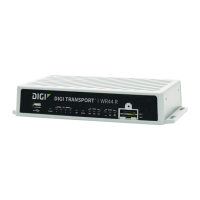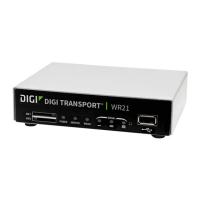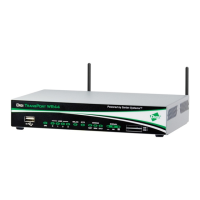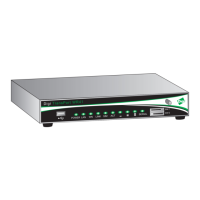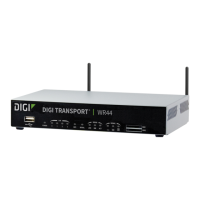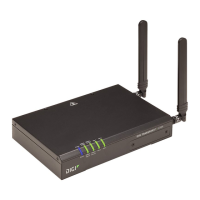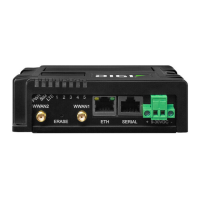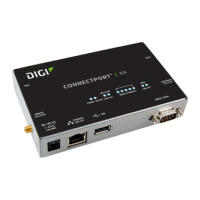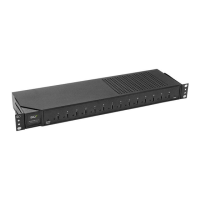Using the command-line interface AT commands
Digi TransPort® Routers User Guide
169
mi b- 2. syst em. sysdescr =
Sof t war e Bui l d Ver 5121. Jan 31 2011 12: 26: 04 9W
at\smib=mib-2.system.sysobjectid: Show network management subsystem identification
The authoritative identification of the network management subsystem. TransPort does not support
outputting OID variables. Instead, oid is output.
mi b- 2. syst em. sysobj ect i d = oi d
at\smib=mib-2.system.sysuptime: Show system uptime
Shows the time the router has been running in 10-millisecond units (hundredths of a second).
mi b- 2. syst em. sysupt i me = 1806718
The above example shows that the router has been running for 5 hours, 1 minute and 7.18 seconds.
at\smib=mib-2.system.syscontact: Show contact information
Shows a description of the contact person for the router. For TransPort, this is always a zero-length
string.
at\smib=mib-2.system.sysname: Show router name
Shows the name of the router. This is the name set in the Router Identity parameter on the
Configuration>System>Device Identity page.
mi b- 2. syst em. sysname = di gi . r out er
at\smib=mib-2.system.syslocation:Show router location
Shows the physical location of the router. For TransPort, this is always a zero-length string.
at\smib=mib-2.system.sysservices: Show router network layer services
Shows a value that represents the set of services the router provides. For each OSI layer, the router
provides services for, 2(L-1) is added to the value, where L is the layer. The layers are shown below.
For TransPort, this value is always 7 (Physical layer (21-1)+Data Link layer (22-1)+Network layer (23-
1)).
Layer Functionality
1 Physical
2 Data Link
3 Network
4 Transport
5 Session
6 Presentation
7 Application
Commands for displaying interface information
The Interfaces hierarchy consists of the ifnumber variable and the iftable node:
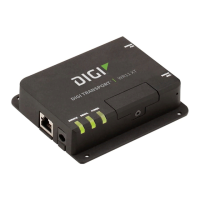
